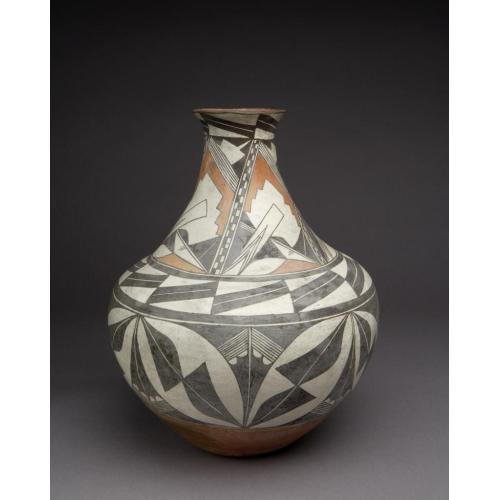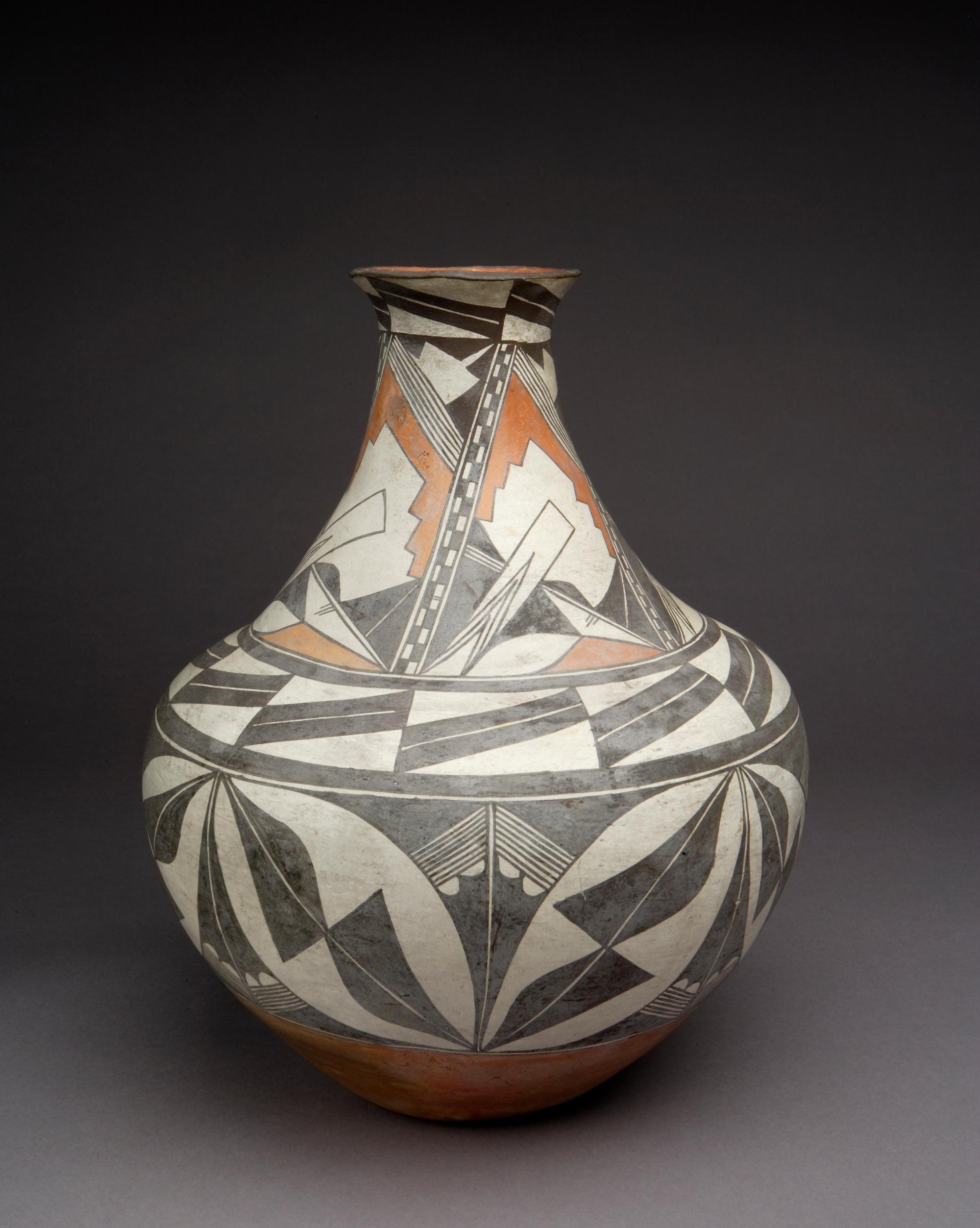
Photograph by Addison Doty. Copyright 2011 School for Advanced Research.
Vase
Date: 1900-1915
Artist or Maker: Unknown
Dimensions:
34.9 x 27.9 cm (13 3/4 x 11 in.)
Medium: clay | paints
Credit Line: Gift of C. Phelps Dodge, 1965.
Place Made:
Valencia County, New Mexico, Southwest, United States, North America
Object Number: IAF.3010
Not on view
Tribal Collection Review RemarksAccording to the participants in the Acoma collection review visit September 4, 2015 (Events Record “Collection Review: Acoma Pueblo, Review 3”): The white haze on the exterior of the vase is likely from holding water. This vase was likely used as a flower vase. There are very few lime popping or pits. The design includes rainbows, pathways, rain lines, clouds, checkerboard pathways, and leaves. The orange slip on the interior rim is darker than the orange used to slip the base.
According to the participants in the Acoma collection review visit February 26-27, 2019 (Events Record “Collection Review: Acoma Pueblo Review 12”): Vases likely came into production as a tourist trade item. The vase form may be an influence from other cultures. Vases are still being made and used today at Acoma in both traditional natural and commercial materials.
In Collection(s)
Bibliography:
Acoma and Laguna Pottery
- Pg. p. 159, 225
- Fig. 7.4
The Indian Arts Research Center, in collaboration with Native American community scholars, strives to present accurate collections records. Records may be updated as new information becomes available and is reviewed with the Native American community having cultural affinity to particular items. Please write to iarc@sarsf.org if you have questions or concerns related to the documentation.
